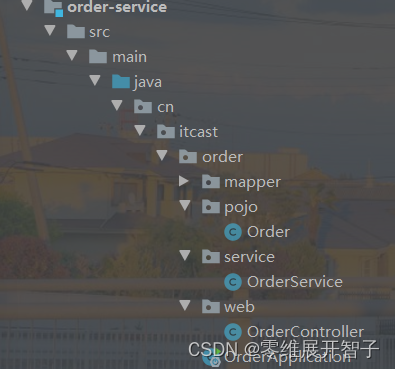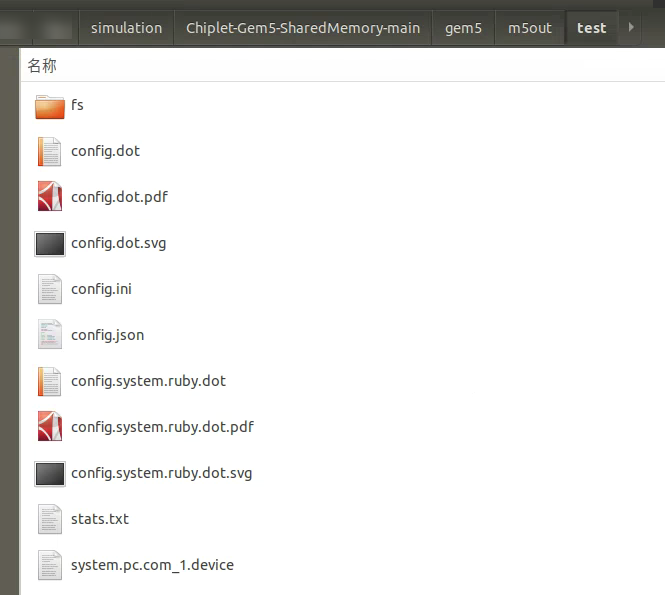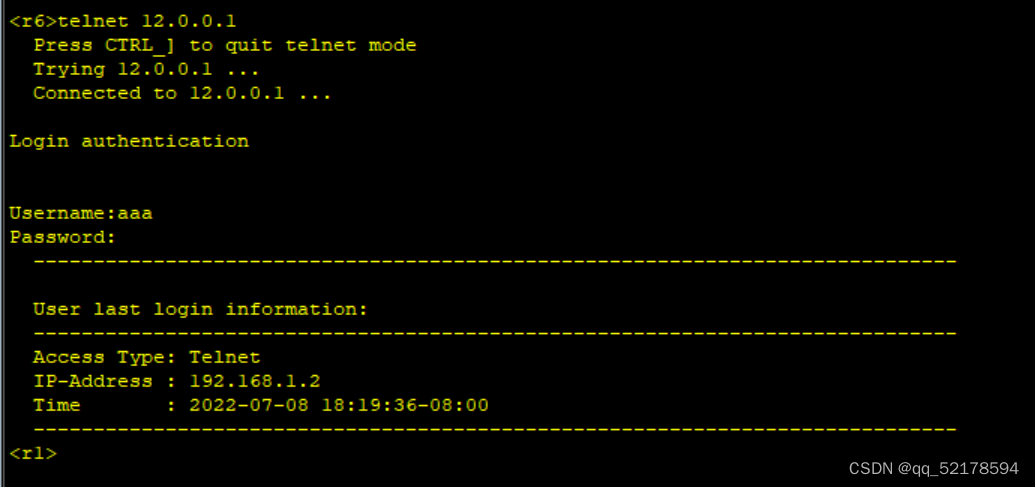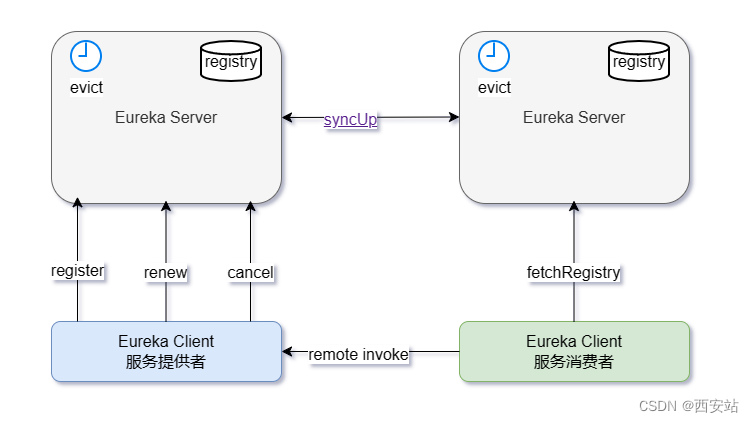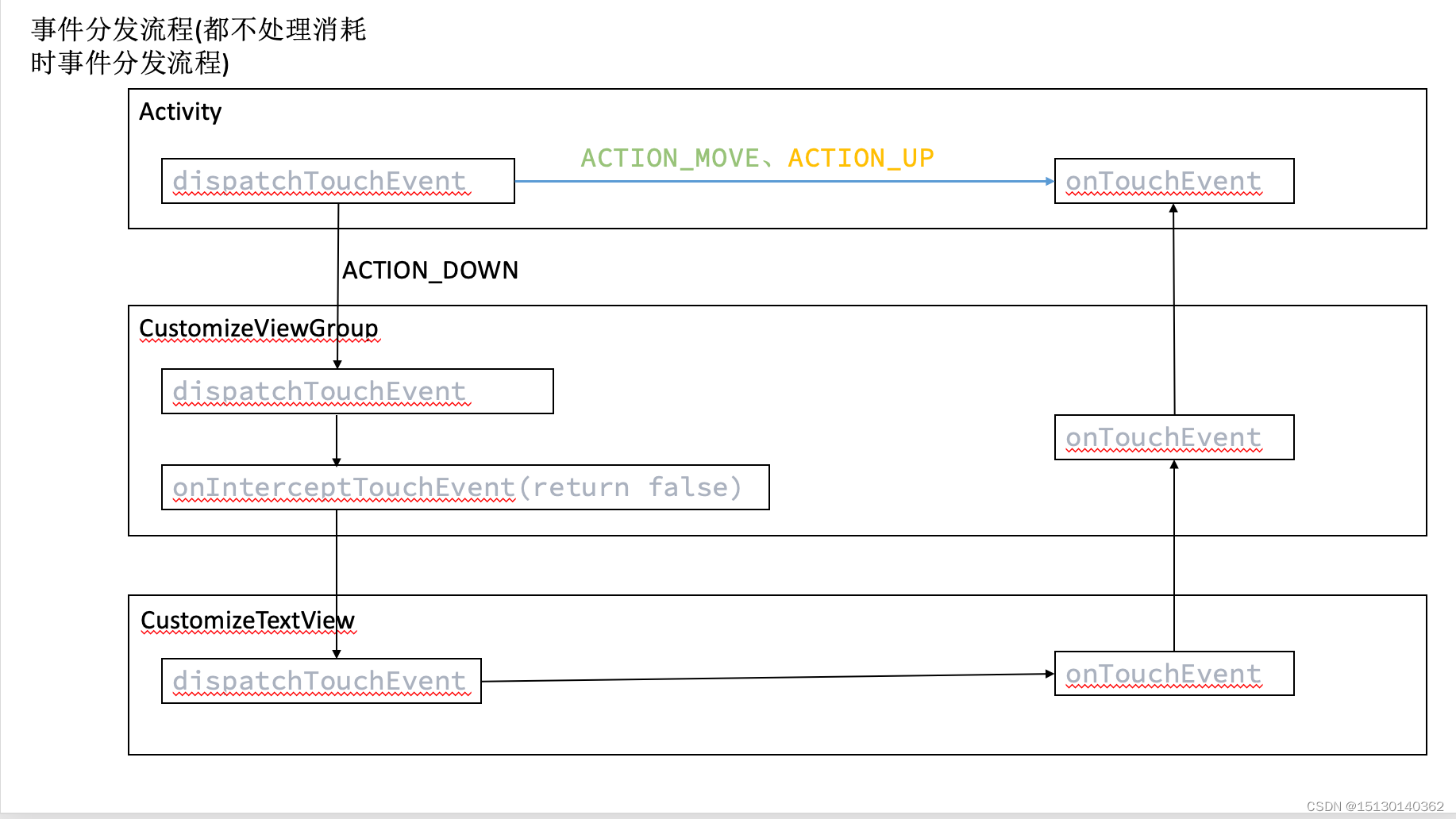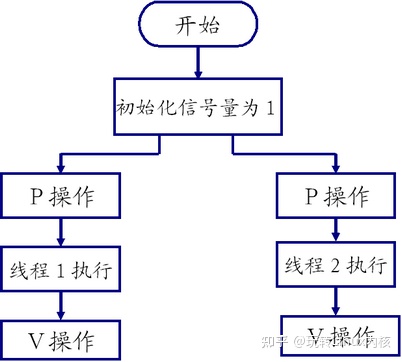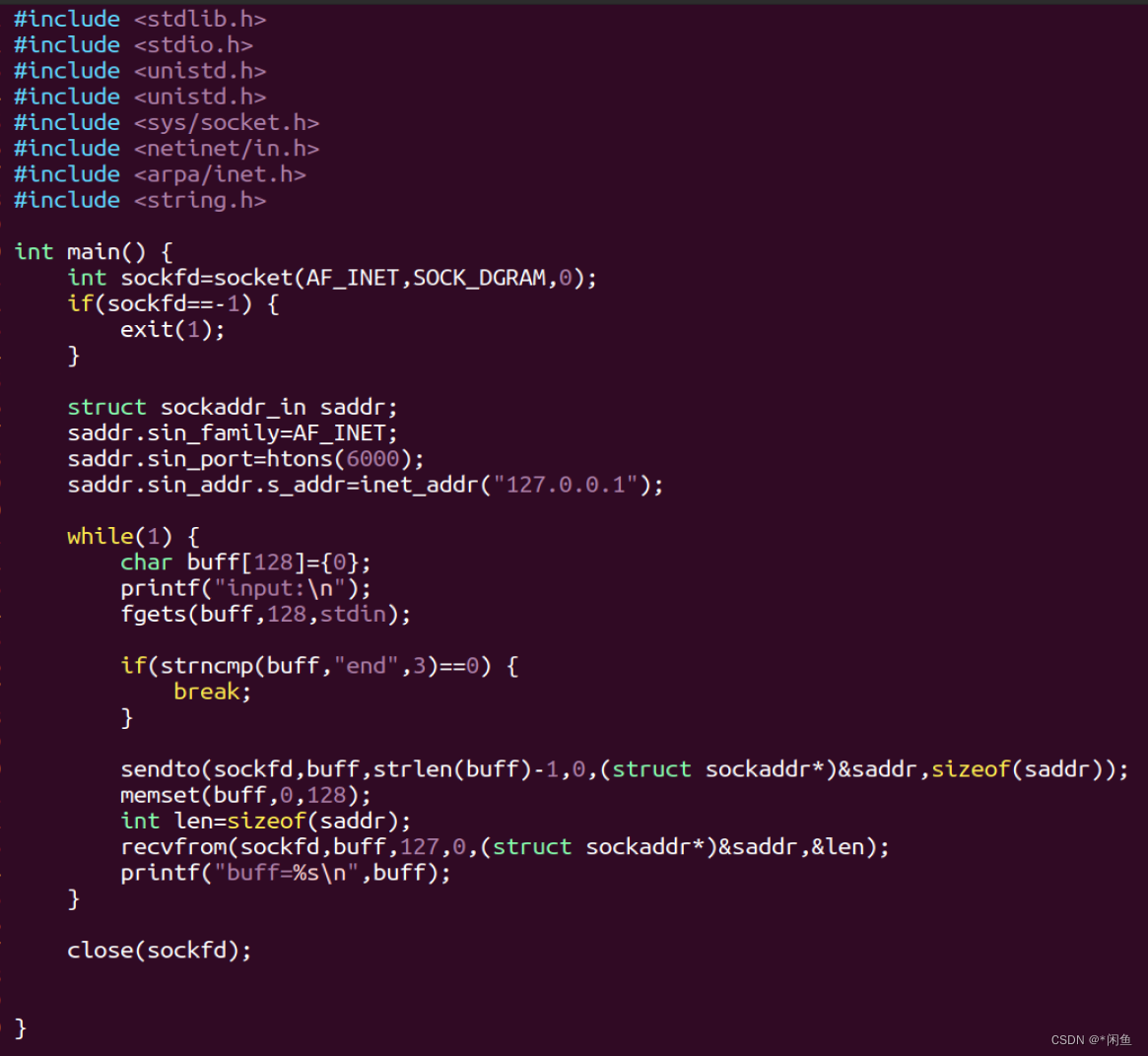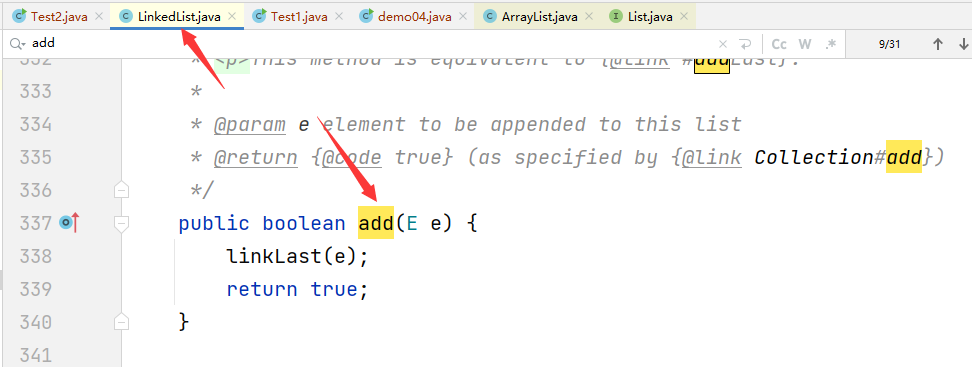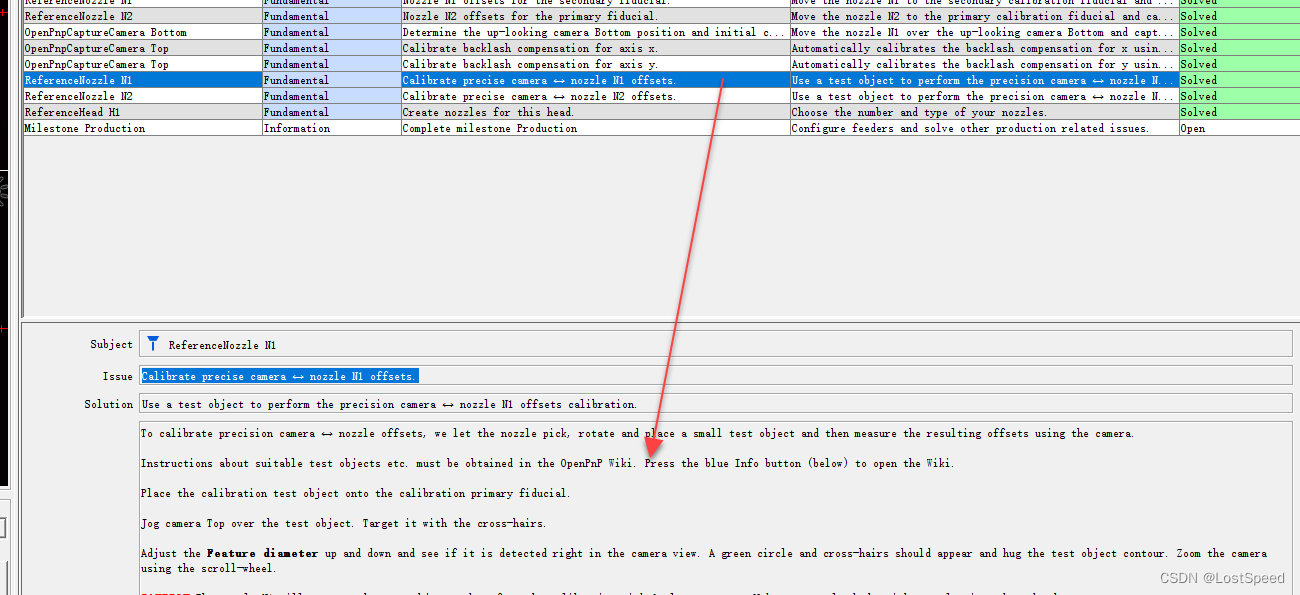1. 前端数据请求方式
早期的网页都是通过后端渲染来完成的:服务器端渲染(SSR,server side render)
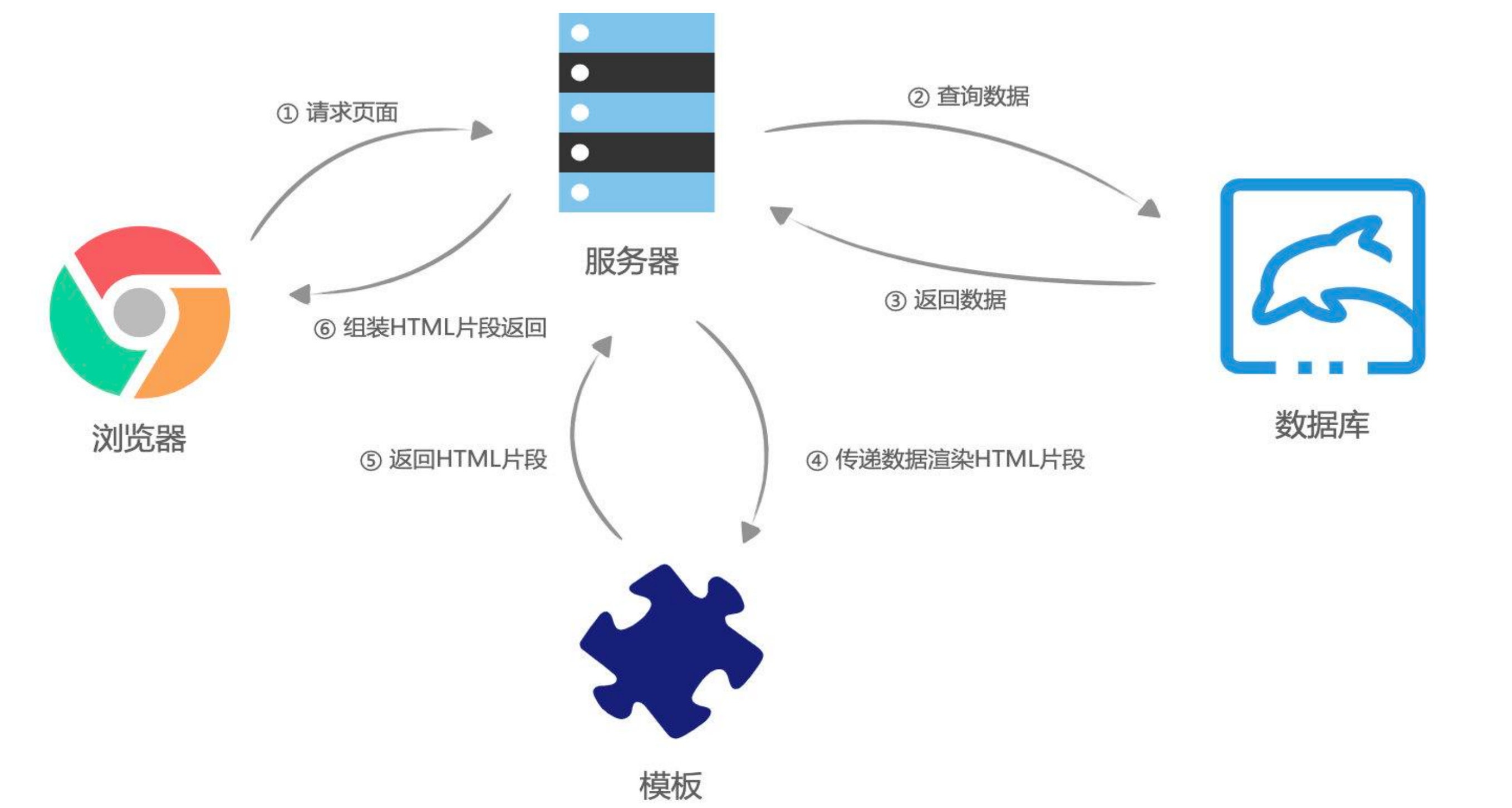
客户端发出请求 -> 服务端接收请求并返回相应HTML文档 -> 页面刷新,客户端加载新的HTML文档
当用户点击页面中的某个按钮向服务器发送请求时,页面本质上只是一些数据发生了变化,而此时服务器却要将重绘的整个页面再返
回给浏览器加载,而且明明只是一些数据的变化却迫使服务器要返回整个HTML文档,这本身也会给网络带宽带来不必要的开销
AJAX(异步的JavaScript和XML)是一种实现 无页面刷新 获取服务器数据的技术,AJAX最吸引人的就是它的“异步”特性,也就是说它可以在不重新刷新页面的情况下与服务器通信,交换数据,或更新页面,通过他开始前后端分离的开发模式
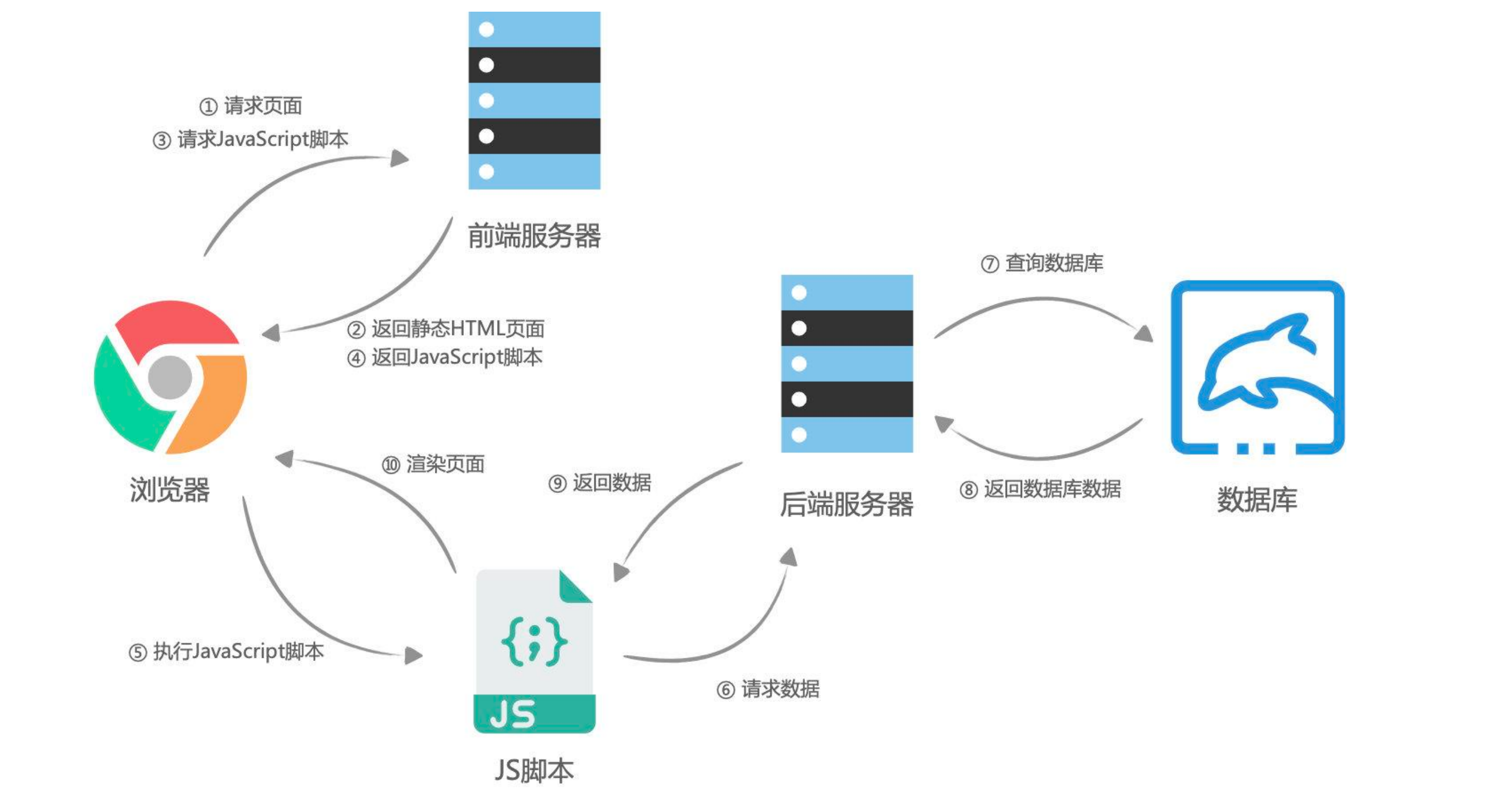
2. Http协议的解析
1. HTTP 协议的作用
超文本传输协议(英语:HyperText Transfer Protocol,缩写:HTTP)是一种用于分布式、协作式和超媒体信息系统的应用层协议,设计HTTP最初的目的是为了提供一种发布和接收HTML页面的方法,通过HTTP或者HTTPS协议请求的资源由统一资源标识符(Uniform Resource Identifiers,URI)来标识
通过使用网页浏览器、网络爬虫或者其它的工具,客户端发起一个HTTP请求到服务器上指定端口(默认端口为80),我们称这个客户端为用户代理程序(user agent),响应的服务器上存储着一些资源,比如HTML文件和图像,我们称这个响应服务器为源服务器(origin server)
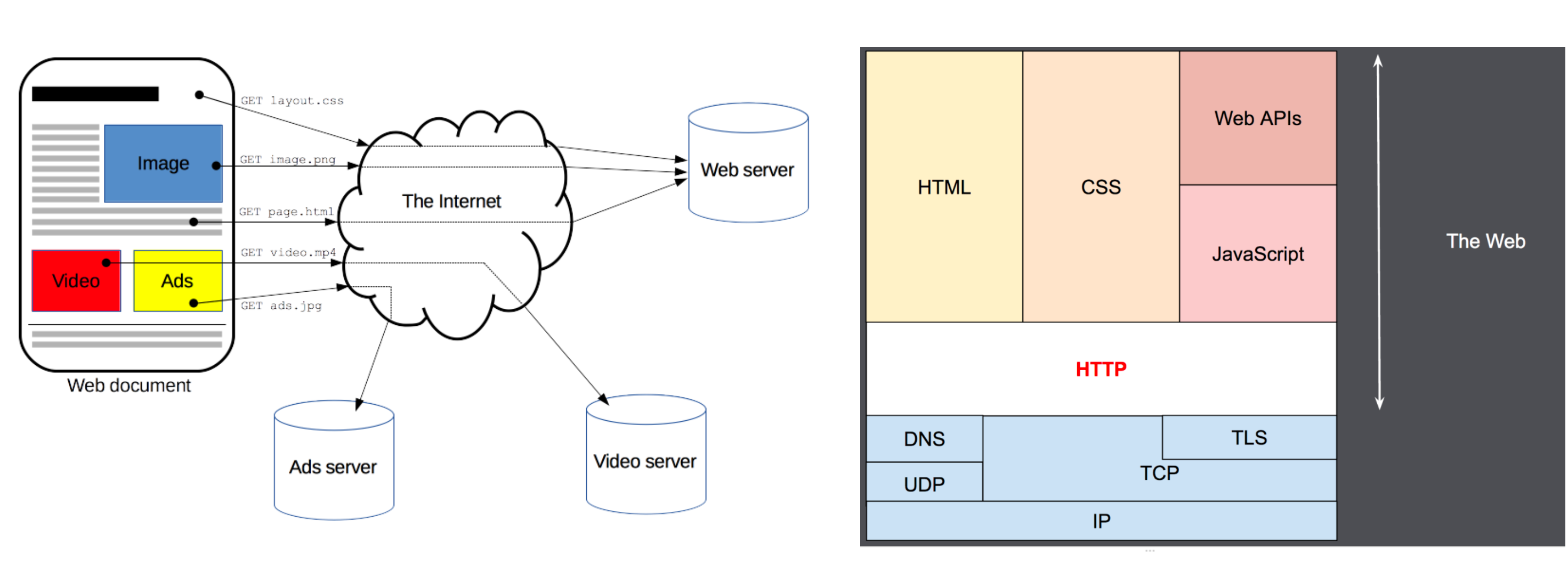
一次HTTP请求主要包括:请求(Request)和响应(Response)
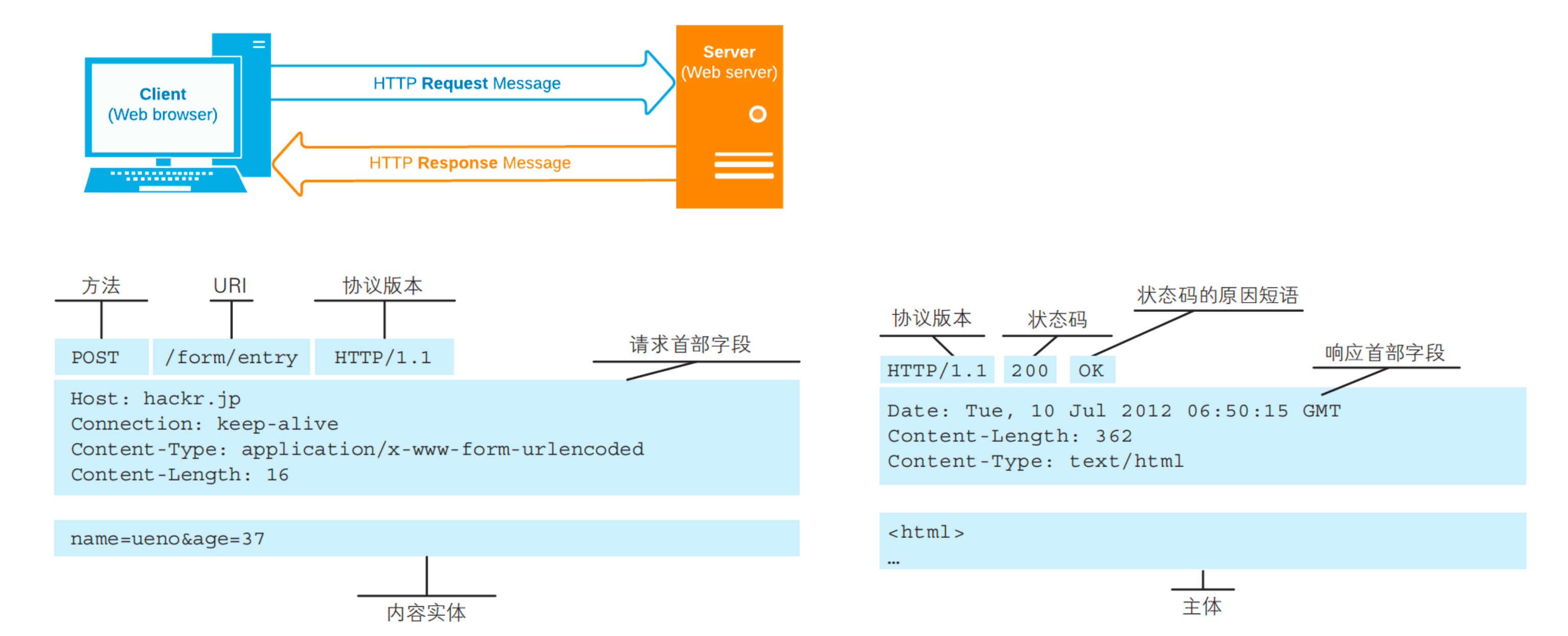
2. 请求方式
GET:GET 方法请求一个指定资源的表示形式,使用 GET 的请求应该只被用于获取数据。
HEAD:HEAD 方法请求一个与 GET 请求的响应相同的响应,但没有响应体。比如在准备下载一个文件前,先获取文件的大小,再决定是否进行下载;
POST:POST 方法用于将实体提交到指定的资源。
PUT:PUT 方法用请求有效载荷(payload)替换目标资源的所有当前表示;
DELETE:DELETE 方法删除指定的资源;
PATCH:PATCH 方法用于对资源应部分修改;
CONNECT:CONNECT 方法建立一个到目标资源标识的服务器的隧道,通常用在代理服务器,网页开发很少用到。
TRACE:TRACE 方法沿着到目标资源的路径执行一个消息环回测试。
3 . HTTP Request Header
在request对象的header中也包含很多有用的信息,客户端会默认传递过来一些信息

content-type 请求携带的数据的类型
application/x-www-form-urlencoded:表示数据被编码成以 ‘&’ 分隔的键 - 值对,同时以 ‘=’ 分隔键和值
application/json:表示是一个json类型
text/plain:表示是文本类型
application/xml:表示是xml类型
multipart/form-data:表示是上传文件
content-length 文件的大小长度
keep-alive
http是基于TCP协议的,但是通常在进行一次请求和响应结束后会立刻中断
在http1.0中,如果想要继续保持连接,浏览器需要在请求头中添加 connection: keep-alive,服务器需要在响应头中添加 connection:keep-alive,当客户端再次放请求时,就会使用同一个连接,直接一方中断连接
在http1.1中,所有连接默认是 connection: keep-alive的
不同的Web服务器会有不同的保持 keep-alive的时间,Node中默认是5s中
accept-encoding:告知服务器,客户端支持的文件压缩格式,比如js文件可以使用gzip编码,对应 .gz文件;
accept:告知服务器,客户端可接受文件的格式类型;
user-agent:客户端相关的信息;
HTTP Response响应状态码
| 常见HTTP状态码 | 状态描述 | 信息说明 |
| 200 | OK | 客户端请求成功 |
| 201 | Created | POST请求,创建新的资源 |
| 301 | Moved | Permanently 请求资源的URL已经修改,响应中会给出新的URL |
| 400 | Bad | Request 客户端的错误,服务器无法或者不进行处理 |
| 401 | Unauthorized | 未授权的错误,必须携带请求的身份信息 |
| 403 | Forbidden | 客户端没有权限访问,被拒接 |
| 404 | Not Found | 服务器找不到请求的资源。 |
| 500 | Internal Server Error | 服务器遇到了不知道如何处理的情况。 |
| 503 | Service Unavailable | 服务器不可用,可能处理维护或者重载状态,暂时无法访问 |
4. HTTP Response Header
响应的header中包括一些服务器给客户端的信息
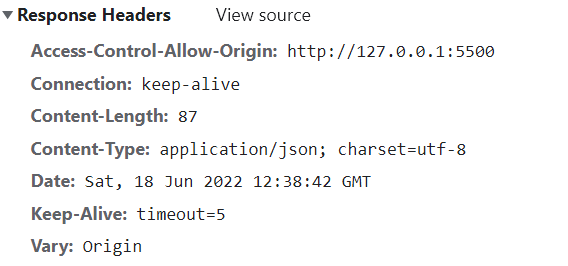
3. XHR的基本用法
AJAX 是异步的 JavaScript 和 XML(Asynchronous JavaScript And XML),它可以使用 JSON,XML,HTML 和 text 文本等格式发送和接收数据
1. AJAX请求步骤
第一步:创建网络请求的AJAX对象(使用XMLHttpRequest)
第二步:监听XMLHttpRequest对象状态的变化,或者监听onload事件(请求完成时触发);
第三步:配置网络请求(通过open方法);
第四步:发送send网络请求;
// 1.创建XMLHttpRequest对象
const xhr = new XMLHttpRequest()
// 2.监听状态的改变(宏任务)
xhr.onreadystatechange = function () {
// console.log(xhr.response)
if (xhr.readyState !== XMLHttpRequest.DONE) return
console.log(xhr.response)
}
// 3.配置请求open
// method: 请求的方式(get/post/delete/put/patch...)
// url: 请求的地址
xhr.open("get", "http://123.207.32.32:8000/home/multidata")
// 4.发送请求(浏览器帮助发送对应请求)
xhr.send()
默认异步发送请求,同步发送请求需要设置第三个参数 false
const xhr = new XMLHttpRequest()
// async: false
// 实际开发中要使用异步请求, 异步请求不会阻塞js代码继续执行
xhr.open("get", "http://123.207.32.32:8000/home/multidata", false)
// 发送请求(浏览器帮助发送对应请求)
xhr.send()
// 同步必须等到有结果后, 才会继续执行
console.log(xhr.response)
2. XMLHttpRequest的state
| 值 | 状态 | 描述 |
| 0 | UNSENT | 代理被创建,但尚未调用 open() 方法。 |
| 1 | OPENED | open() 方法已经被调用。 |
| 2 | HEADERS | _RECEIVED send() 方法已经被调用,并且头部和状态已经可获得。 |
| 3 | LOADING | 下载中;responseText 属性已经包含部分数据。 |
| 4 | DONE | 下载操作已完成。 |
这个状态并非是HTTP的相应状态,而是记录的XMLHttpRequest对象的状态变化,http响应状态应通过status获取
xhr.onload = function() {
console.log(xhr.status, xhr.statusText)
// 根据http的状态码判断是否请求成功
if (xhr.status >= 200 && xhr.status < 300) {
console.log(xhr.response)
} else {
console.log(xhr.status, xhr.statusText)
}
}
3. 事件监听
除了onreadystatechange还有其他的事件可以监听
loadstart:请求开始。
progress: 一个响应数据包到达,此时整个 response body 都在 response 中。
abort:调用 xhr.abort() 取消了请求。
error:发生连接错误,例如,域错误。不会发生诸如 404 这类的 HTTP 错误。
load:请求成功完成。
timeout:由于请求超时而取消了该请求(仅发生在设置了 timeout 的情况下)。
loadend:在 load,error,timeout 或 abort 之后触发。
const xhr = new XMLHttpRequest()
// onload监听数据加载完成
xhr.onload = function() {
console.log("onload")
}
xhr.open("get", "http://123.207.32.32:8000/home/multidata")
xhr.send()
4. 响应数据和响应类型
XMLHttpRequest response 属性返回响应的正文内容,返回的类型取决于responseType的属性设置
// 1.创建对象
const xhr = new XMLHttpRequest()
// 2.监听结果
// 3.设置响应类型
xhr.responseType = "json"
// 4.配置网络请求
// xhr.open("get", "http://123.207.32.32:8000/abc/cba/aaa")
xhr.open("get", "http://123.207.32.32:8000/home/multidata")
// 5.发送网络请求
xhr.send()
XMLHttpRequest的state是用于记录xhr对象本身的状态变化,并非针对于HTTP的网络请求状态,如果我们希望获取HTTP响应的网络状态,可以通过status和statusText来获取
| 常见HTTP状态码 | 状态描述 | 信息说明 |
| 200 | OK | 客户端请求成功 |
| 201 | Created | POST请求,创建新的资源 |
| 301 | Moved | Permanently 请求资源的URL已经修改,响应中会给出新的URL |
| 400 | Bad | Request 客户端的错误,服务器无法或者不进行处理 |
| 401 | Unauthorized | 未授权的错误,必须携带请求的身份信息 |
| 403 | Forbidden | 客户端没有权限访问,被拒接 |
| 404 | Not Found | 服务器找不到请求的资源。 |
| 500 | Internal Server Error | 服务器遇到了不知道如何处理的情况。 |
| 503 | Service Unavailable | 服务器不可用,可能处理维护或者重载状态,暂时无法访问 |
const xhr = new XMLHttpRequest()
// 2.onload监听数据加载完成
xhr.onload = function() {
console.log(xhr.status, xhr.statusText)
// 根据http的状态码判断是否请求成功
if (xhr.status >= 200 && xhr.status < 300) {
console.log(xhr.response)
} else {
console.log(xhr.status, xhr.statusText)
}
}
xhr.onerror = function() {
console.log("onerror", xhr.status, xhr.statusText)
}
// 3.告知xhr获取到的数据的类型
xhr.responseType = "json"
// xhr.responseType = "xml"
// 4.配置网络请求
// 4.1.json类型的接口
xhr.open("get", "http://123.207.32.32:8000/home/multidata")
// 4.2.json类型的接口
// xhr.open("get", "http://123.207.32.32:1888/01_basic/hello_json")
// 4.3.text类型的接口
// xhr.open("get", "http://123.207.32.32:1888/01_basic/hello_text")
// 4.4.xml类型的接口
// xhr.open("get", "http://123.207.32.32:1888/01_basic/hello_xml")
// 5.发送网络请求
xhr.send()
5. GET/POST请求传递参数
在开发中,我们使用最多的是GET和POST请求,在发送请求的过程中,我们也可以传递给服务器数据。
常见的传递给服务器数据的方式有如下几种
方式一:GET请求的query参数
方式二:POST请求 x-www-form-urlencoded 格式
方式三:POST请求 FormData 格式
方式四:POST请求 JSON 格式
const xhr = new XMLHttpRequest()
// 监听数据响应
xhr.onload = function() {
console.log(xhr.response)
}
// 配置请求
xhr.responseType = "json"
// 1.传递参数方式一: get -> query
// xhr.open("get", "http://123.207.32.32:1888/02_param/get?name=why&age=18&address=广州市")
// 2.传递参数方式二: post -> urlencoded
// xhr.open("post", "http://123.207.32.32:1888/02_param/posturl")
// // 发送请求(请求体body)
// xhr.setRequestHeader("Content-type", "application/x-www-form-urlencoded")
// xhr.send("name=why&age=18&address=广州市")
// 3.传递参数方式三: post -> formdata
// xhr.open("post", "http://123.207.32.32:1888/02_param/postform")
// // formElement对象转成FormData对象
// const formData = new FormData(formEl)
// xhr.send(formData)
// 4.传递参数方式四: post -> json
xhr.open("post", "http://123.207.32.32:1888/02_param/postjson")
xhr.setRequestHeader("Content-type", "application/json")
xhr.send(JSON.stringify({name: "why", age: 18, height: 1.88}))
4. XHR的进阶和封装
1. XHR封装方式一
function xajax({
url,
method = "get",
data = {},
headers = {}, // token
success,
failure
} = {}) {
// 1.创建对象
const xhr = new XMLHttpRequest()
// 2.监听数据
xhr.onload = function () {
if (xhr.status >= 200 && xhr.status < 300) {
success && success(xhr.response)
} else {
failure && failure({status: xhr.status, message: xhr.statusText})
}
}
// 3.设置类型
xhr.responseType = "json"
// 4.open方法
if (method.toUpperCase() === "GET") {
const queryStrings = []
for (const key in data) {
queryStrings.push(`${key}=${data[key]}`)
}
url = url + "?" + queryStrings.join("&")
xhr.open(method, url)
xhr.send()
} else {
xhr.open(method, url)
xhr.setRequestHeader("Content-type", "application/json")
xhr.send(JSON.stringify(data))
}
return xhr
}
// 调用者
xajax({
url: "http://123.207.32.32:1888/02_param/get",
method: "GET",
data: {
name: "why",
age: 18
},
success: function (res) {
console.log("res:", res)
},
failure: function (err) {
// alert(err.message)
}
})
2. XHR封装方式二
function xajax({
url,
method = "get",
data = {},
timeout = 10000,
headers = {}, // token
} = {}) {
// 1.创建对象
const xhr = new XMLHttpRequest()
// 2.创建Promise
const promise = new Promise((resolve, reject) => {
// 2.监听数据
xhr.onload = function() {
if (xhr.status >= 200 && xhr.status < 300) {
resolve(xhr.response)
} else {
reject({ status: xhr.status, message: xhr.statusText })
}
}
// 3.设置类型
xhr.responseType = "json"
xhr.timeout = timeout
// 4.open方法
if (method.toUpperCase() === "GET") {
const queryStrings = []
for (const key in data) {
queryStrings.push(`${key}=${data[key]}`)
}
url = url + "?" + queryStrings.join("&")
xhr.open(method, url)
xhr.send()
} else {
xhr.open(method, url)
xhr.setRequestHeader("Content-type", "application/json")
xhr.send(JSON.stringify(data))
}
})
promise.xhr = xhr
return promise
}
const promise = xajax({
url: "http://123.207.32.32:1888/02_param/get",
data: {
username: "coderwhy",
password: "123456"
}
})
promise.then(res => {
console.log("res:", res)
}).catch(err => {
console.log("err:", err)
})
3. 超时时间的设置
在网络请求的过程中,为了避免过长的时间服务器无法返回数据,通常我们会为请求设置一个超时时间:timeout,当达到超时时间后依然没有获取到数据,那么这个请求会自动被取消掉,默认值为0,表示没有设置超时时间
我们也可以通过abort方法强制取消请求
const xhr = new XMLHttpRequest()
xhr.onload = function() {
console.log(xhr.response)
}
xhr.onabort = function() {
console.log("请求被取消掉了")
}
xhr.responseType = "json"
// 1.超时时间的设置
xhr.ontimeout = function() {
console.log("请求过期: timeout")
}
// timeout: 浏览器达到过期时间还没有获取到对应的结果时, 取消本次请求
xhr.timeout = 3000
xhr.open("get", "http://123.207.32.32:1888/01_basic/timeout")
xhr.send()
5. Fetch的使用详解
Fetch可以看做是早期的XMLHttpRequest的替代方案,它提供了一种更加现代的处理方案:
比如返回值是一个Promise,提供了一种更加优雅的处理结果方式,在请求发送成功时,调用resolve回调then; ✓ 在请求发送失败时,调用reject回调catch,比如不像XMLHttpRequest一样,所有的操作都在一个对象上
Fetch函数的参数
- input:定义要获取的资源地址,可以是一个URL字符串,也可以使用一个Request对象(实验性特性)类型;
- init:其他初始化参数
- method: 请求使用的方法,如 GET、POST
- headers: 请求的头信息
- body: 请求的 body 信息
Fetch数据的响应
- 阶段一:当服务器返回了响应
- fetch 返回的 promise 就使用内建的 Response class 对象来对响应头进行解析
- 在这个阶段,我们可以通过检查响应头,来检查 HTTP 状态以确定请求是否成功
- 如果 fetch 无法建立一个 HTTP 请求,例如网络问题,亦或是请求的网址不存在,那么 promise 就会 reject
- 异常的 HTTP 状态,例如 404 或 500,不会导致出现 error
- 第二阶段,为了获取 response body,我们需要使用一个其他的方法调用
- response.text() —— 读取 response,并以文本形式返回 response
- response.json() —— 将 response 解析为 JSON
fetch("http://123.207.32.32:8000/home/multidata").then(response => {
response.json().then(res => {
console.log("res:", res)
})
}).catch(err => {
console.log("err:", err)
})
代码优化
async function getData() {
const formData = new FormData()
formData.append("name", "why")
formData.append("age", 18)
const response = await fetch("http://123.207.32.32:1888/02_param/postform", {
method: "post",
body: formData
})
// 获取response状态
console.log(response.ok, response.status, response.statusText)
const res = await response.json()
console.log("res:", res)
}
getData()
6. 前端文件上传流程
1. XHR
<body>
<input class="file" type="file">
<button class="upload">上传文件</button>
<script>
// xhr/fetch
const uploadBtn = document.querySelector(".upload")
uploadBtn.onclick = function() {
// 1.创建对象
const xhr = new XMLHttpRequest()
// 2.监听结果
xhr.onload = function() {
console.log(xhr.response)
}
xhr.onprogress = function(event) {
console.log(event)
}
xhr.responseType = "json"
xhr.open("post", "http://123.207.32.32:1888/02_param/upload")
// 表单
const fileEl = document.querySelector(".file")
const file = fileEl.files[0]
const formData = new FormData()
formData.append("avatar", file)
xhr.send(formData)
}
</script>
</body>
2. Fetch
<body>
<input class="file" type="file">
<button class="upload">上传文件</button>
<script>
const uploadBtn = document.querySelector(".upload")
uploadBtn.onclick = async function() {
// 表单
const fileEl = document.querySelector(".file")
const file = fileEl.files[0]
const formData = new FormData()
formData.append("avatar", file)
// 发送fetch请求
const response = await fetch("http://123.207.32.32:1888/02_param/upload", {
method: "post",
body: formData
})
const res = await response.json()
console.log("res:", res)
}
</script>
</body>
Fetch也支持文件上传,但是Fetch没办法监听进度


![[ant-design-vue] tree 组件功能使用](https://img-blog.csdnimg.cn/d9776c234f844e42ad0792fca7647eaf.png)



